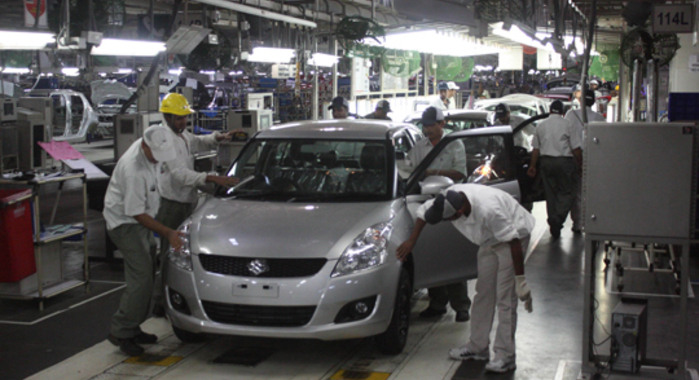The new auto policy is around the corner and the topic of localisation is under heavy debate. In the course of seven decades, the Pakistani auto industry failed to produce a single sustainable indigenous vehicle. Adam Revo was Pakistan’s 4th attempt at making an indigenous car, but the car failed because of the monopoly of the Big 3, who not only enjoy their reign over consumers but also on the vendors. These automakers have invested heavily on vendors and they also have their stakes in some vendors through which they exercise their bargaining power on them. On vendors who they don’t have any stake or investment in, they simply use the power of being a big customer on them. One way or another, they enjoy total control over the auto industry of Pakistan.
Competition Commission of Pakistan (CCP) is seeking to have the level of localisation – the extent to which a car part of component is made in Pakistan by employing the local labor – increased which is currently 90 percent for two-wheeler segment, between 55 and 70 percent for passenger car segment, and around 30% for heavy vehicle segment which include trucks, buses and other heavy vehicles. While there is a room to increase localisation in the passenger car segment, there is very little or no room to increase the level of localisation in heavy vehicle segment. Primarily because of the number of vehicles produced in this segment is very low as compared to the passenger car segment. Likewise, in the two-wheeler segment, there is not much room to increase the level of localisation as localisation is at the optimal level in two-wheeler segment, so I will talk about the passenger car and heavy vehicle segments.
In the fiscal year 2013-14, the total number of passenger cars sold was 118,102, trucks sold was 2663 and buses sold was 577. These numbers do not include the numbers from FAW as PAMA does not recognize it as a local manufacturer, although FAW has been assembling vehicles in Pakistan since 2006 which includes both heavy and light vehicles.
As you can see from these numbers, it all comes down to the concept of economies of scale and product specialization. The heavy vehicle industry is so small that the vendors cannot afford to setup plants to manufacture the components locally. The whole industry which comprises of 12 automakers sells only 270 vehicles per month. In an industry like this, no vendor would setup facility to localize parts and components because it will not be able to meet its bottom-line, so 30% localisation in this segment is optimal and would remain as such for the foreseeable future. Even if the sales grow to an astronomical number, there will be parts and components that we would continue to import for the reason that there are some countries which can produce certain parts cheaper and better than those we can manufacture in Pakistan, and importing such parts and component would not be feasible both in terms of cost and quality.
However, in the passenger car segment, apart from Suzuki Mehran car, which is at around 70% localisation, all other cars are below that level. With close to 118,000 vehicles sold, even the 70% is a shame for a car which has been in production for close to 3 decades now with no significant change. Although 100% localisation is not possible due to the aforementioned reasons, it should have at least been close to 90% if not more than that.The passenger car segment is the most profitable segment with high margin per unit. The increased localisation would have benefited both the automakers and the vendors alike. Jigs, molds and other machinery would have been amortized by now if a considerate auto policy would have been implemented 5 years back. And that is why we need a concrete auto policy and why the upcoming auto policy is so crucial. The industry needs reforms, the auto policy could do just that for the industry.


This is just another example of just how poorly competitive Pakistan’s industries are in the global market given the stiffness of the competition, generally speaking. For multinationals to invest in local production is pointless since they can get much better returns elsewhere.
Yeah. Only those MNCs would invest who want to increase their global foot prints. They won’t come for the numbers. That’s why MNCs normally do not invest directly, rather give big business groups to license to sell/manufacture their products so once the market is developed and risk is mitigated then they can come and buy the majority shares.
For every shirt a Pakistani can sew, a Chinese will sow three shirts. It is the same with just about everything else, other than raw materials of course. What are MNCs supposed to do?
Perhaps setting up a proper aftermarket supply of parts to be made locally rather than imported may be a solution? Sales growth in these 3 segments + localization may not happen and be fruitful, but these cars will still need to be serviced.